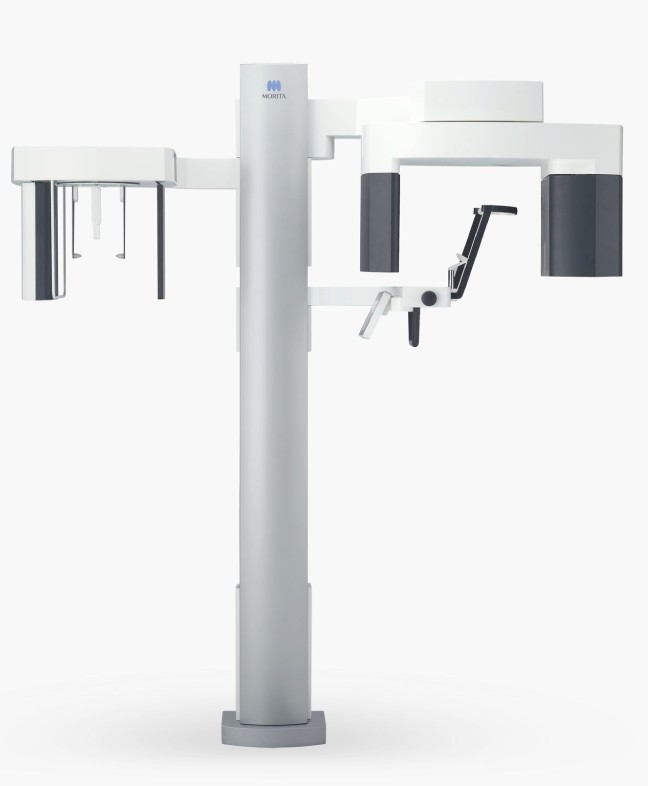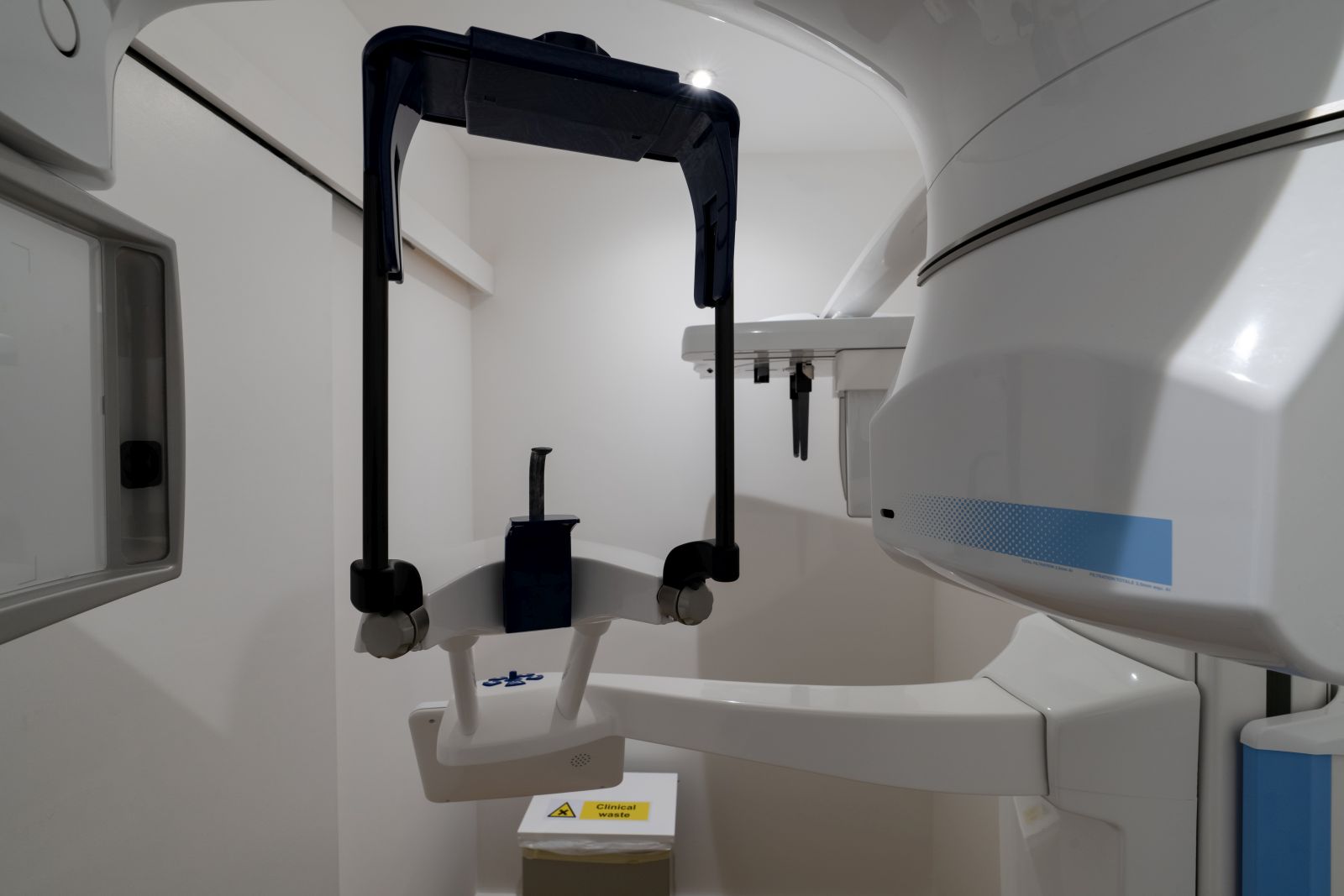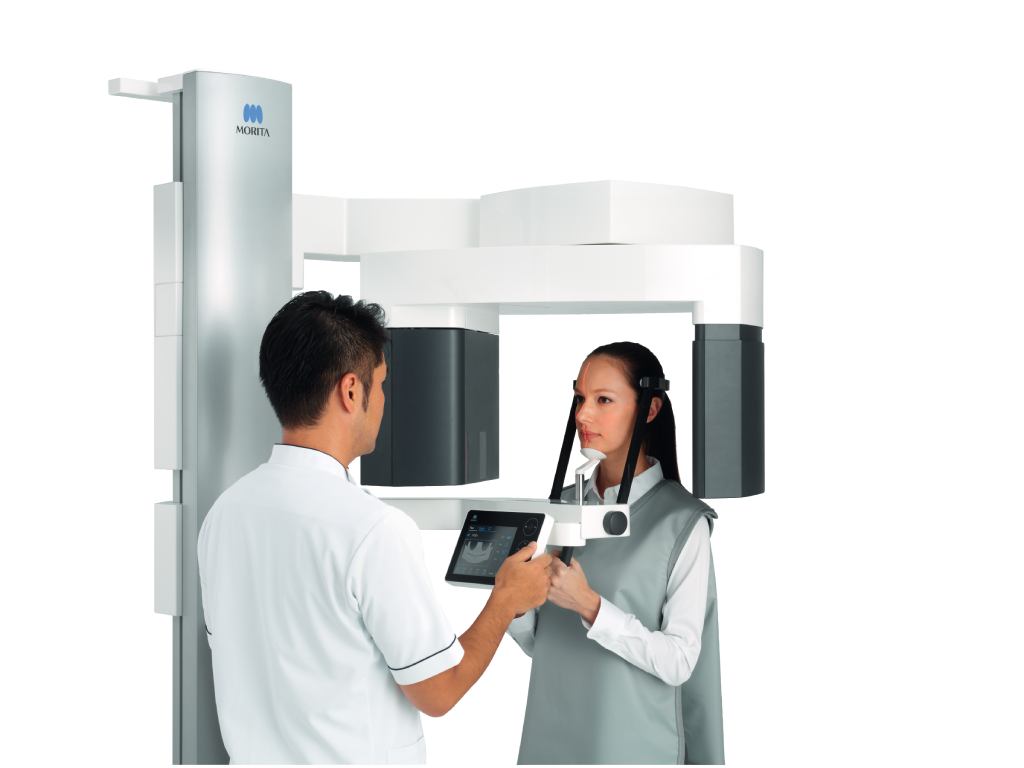What is a CBCT scanner?
Our Morita X800 and Planmeca Promax 3D CBCT scanners are the best-in-class cone beam CT imaging machines, capable of producing incredibly detailed internal views of the mouth, face, jaws and cervical spine. A CBCT scanner uses very low doses of radiation to produce amazing 3D images of the teeth and the surrounding structures. Unlike traditional X-rays, CBCT scanners can distinguish between different types of tissue and this enables your surgeon/dentist/doctor to see structures in greater detail and from a greater variety of angles.
What are the benefits of a CBCT scanner?

What are CBCT scanners used for?
CBCT is the gold standard imaging method in dentistry, maxillofacial (Maxfax) surgery, ENT and upper cervical chiropractic for indications such as:
- Dental implant planning and placement
- Airway sleep disorders such as sleep apnoea
- Diagnosis and detection of infections and tumours
- Ear Nose and Throat investigations
- Nasal anatomy: septum, turbinates and sinus study
- Oral surgery, orthognathic surgery, jaw and face surgery and wisdom teeth extractions
- Facial and tooth fractures
- TMJ (temporomandibular joint disorder) diagnosis and evaluation
- Complex endodontic cases, high resolution root canal treatment
- Orthodontic treatment
- Periodontal disease
- Upper cervical chiropractic treatment
Advantages of CBCT scans
- Better image quality and accuracy, CBCT scans can focus in on a specific spot, allowing dentists to examine an area that is small as a single tooth’s root (4cm x 4cm).
- Unlike traditional dental X-rays, the CBCT scan can show both bones and soft tissues easily, this allowing the medical professional to form a more precise treatment plan.
- CBCT uses lower dose of radiation than a conventional CT scan (7-10 times less!)


Temporomandibular Joint (TMJ)
Although the clinical examination is the most important step in the diagnosis of TMJ pathology, a TMJ 3D CBCT scan (cone beam CT) is needed due to the complex anatomy and pathology.
It is very common to take an image of the joint when there is locking, pain and articular sounds.
One important thing to consider when imaging the TMJ is the interpretation of the joint function, which can be accomplished by comparing the condyle in the closed and opened mouth position.
